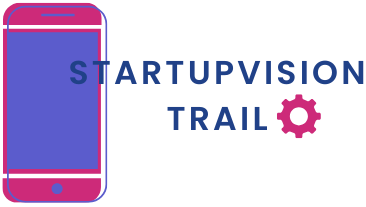Table of Contents
ToggleIn today’s digital landscape, data protection solutions have become essential for businesses of all sizes. With cyber threats evolving and data breaches making headlines, organizations must prioritize safeguarding their sensitive information. It’s no longer just about compliance; it’s about maintaining trust and ensuring continuity in operations.
Data protection solutions encompass a wide range of strategies and technologies designed to prevent unauthorized access, loss, or corruption of data. From encryption and firewalls to backup systems and disaster recovery plans, these tools help organizations mitigate risks and respond effectively to incidents. Understanding the various options available can empower businesses to make informed decisions and enhance their overall security posture.
Overview of Data Protection Solutions
Data protection solutions encompass a range of strategies and technologies designed to safeguard sensitive information. Organizations face various cyber threats, making it crucial to adopt effective measures for data security. Solutions include:
- Encryption: This process converts data into a coded format, protecting it from unauthorized access. Encryption secures data in transit and at rest, ensuring privacy.
- Firewalls: Firewalls act as a barrier between internal networks and external threats. They monitor incoming and outgoing traffic, blocking malicious activities.
- Backup Systems: Regular backups preserve data copies, allowing recovery in case of data loss or corruption. Backup solutions include cloud storage and local physical drives.
- Disaster Recovery Plans: These plans outline procedures for restoring IT operations after a data loss event. Effective recovery strategies reduce downtime and maintain business continuity.
- Access Controls: Implementing strict access controls ensures only authorized personnel can access sensitive data. Role-based access limits exposure based on job responsibilities.
- Data Loss Prevention (DLP): DLP technologies monitor data usage and movement to prevent unauthorized sharing or leakage. DLP solutions help organizations maintain compliance with data protection regulations.
By integrating these solutions, businesses enhance their capability to protect sensitive information, ensuring compliance and fostering trust with stakeholders. Organizations should continually assess and update their data protection strategies in response to evolving threats.
Types of Data Protection Solutions

Organizations employ various data protection solutions to secure sensitive information effectively. These solutions include backup and recovery options, encryption technologies, Data Loss Prevention (DLP) tools, and cloud security measures.
Backup and Recovery Solutions
Backup and recovery solutions ensure data integrity by creating copies of essential information. These systems provide automatic backups based on scheduled intervals, which can range from hourly to daily. Recovery strategies must include full, incremental, and differential backups, facilitating quick restoration after data loss or corruption. Notably, utilizing off-site or cloud-based backup solutions enhances data redundancy, providing an additional layer of protection against physical disasters.
Encryption Technologies
Encryption technologies protect data by converting it into an unreadable format unless decrypted with a designated key. This approach secures sensitive information both at rest and in transit. Several encryption standards, like AES (Advanced Encryption Standard), comply with industry regulations and provide robust protection. Applying encryption to emails, databases, and file storage safeguards against unauthorized access.
Data Loss Prevention (DLP) Tools
Data Loss Prevention (DLP) tools monitor and control the movement of sensitive data within and outside an organization. These tools identify, classify, and protect confidential data through policies based on compliance requirements. DLP solutions prevent data breaches by blocking unauthorized transfer of sensitive information over networks or through email. Common DLP features include endpoint security, content inspection, and user behavior monitoring, enhancing overall data security.
Cloud Security Solutions
Cloud security solutions address risks associated with cloud computing environments. Implementing robust security measures, such as identity and access management (IAM) and multi-factor authentication (MFA), controls user access to sensitive data. Encrypting data stored in the cloud protects it from unauthorized access, while continuous monitoring helps identify and mitigate potential threats. Effective cloud security strategies ensure compliance with regulations while safeguarding organizational data in dynamic environments.
Key Features to Consider
Selecting the right data protection solutions requires a focus on essential features that support organizational needs. Consider the following aspects for optimal data security.
Scalability and Flexibility
Scalability allows solutions to adapt as organizational demands evolve. Solutions should accommodate growth by providing increased capacity for data management. Flexibility enables organizations to customize configurations based on specific requirements. Choose tools that support various deployment models, including on-premises, cloud, and hybrid environments.
Compliance and Regulations
Compliance with data protection regulations is crucial. Solutions must align with standards such as GDPR, HIPAA, and PCI DSS. Organizations need tools that facilitate audits and reporting to demonstrate adherence. Verify that the chosen solution offers features like data encryption and access controls to help meet compliance requirements effectively.
User-Friendliness
User-friendliness enhances efficiency during deployment and management. Solutions should feature intuitive interfaces that simplify navigation. Comprehensive training resources can aid in user adoption. Favor solutions with clear documentation and support channels for timely assistance.
Cost-Effectiveness
Cost-effectiveness impacts overall budgeting for data protection measures. Assess both upfront and ongoing costs, including licensing fees and maintenance expenses. Solutions providing comprehensive features at a competitive price point offer better value. Calculate the total cost of ownership by considering potential savings from preventing data breaches and improving operational resilience.
Top Data Protection Solutions in 2023
Several innovative data protection solutions emerge in 2023, each with unique features that enhance security and compliance for businesses. Below are three top solutions worth considering.
Solution 1: Overview and Features
Data Encryption Services
Data encryption services secure sensitive information by converting it into an unreadable format, ensuring that only authorized users can access it. Solutions include AES (Advanced Encryption Standard) and RSA encryption. Key features include:
- Strong Cryptographic Algorithms: Utilize robust algorithms to protect data in transit and at rest.
- Automated Key Management: Streamline encryption keys for improved security and ease of use.
- Compliance Support: Aid compliance with regulations like GDPR and HIPAA by providing encryption logs and reports.
Solution 2: Overview and Features
Backup and Recovery Solutions
Backup and recovery solutions play an essential role in data protection by ensuring data integrity and availability. These systems create automatic backups and enable quick recovery strategies. Key features include:
- Incremental Backups: Minimize storage use by backing up only changed data since the last backup.
- Cloud Integration: Support offsite backups on cloud platforms for enhanced security and accessibility.
- Rapid Recovery Options: Provide multiple data recovery points and fast restoration processes to reduce downtime.
Solution 3: Overview and Features
Data Loss Prevention (DLP) Tools
- Real-Time Monitoring: Continuously track data flows to detect and block unauthorized actions or leaks.
- Policy Enforcement: Implement customizable policies based on data sensitivity levels and compliance requirements.
- User Activity Reporting: Generate detailed reports on user activities involving sensitive data, aiding compliance audits and investigations.
Data protection solutions are essential for businesses navigating today’s digital landscape. By implementing a combination of encryption, backup systems, and DLP tools, organizations can effectively shield sensitive information from cyber threats.
Choosing the right solutions involves considering scalability, compliance, and user-friendliness to ensure they meet specific needs. As technology evolves, staying informed about innovative data protection options can significantly enhance security measures.
Ultimately, a proactive approach to data protection not only safeguards valuable assets but also builds trust with clients and stakeholders. Prioritizing data security is a strategic investment that pays dividends in operational continuity and reputation management.





